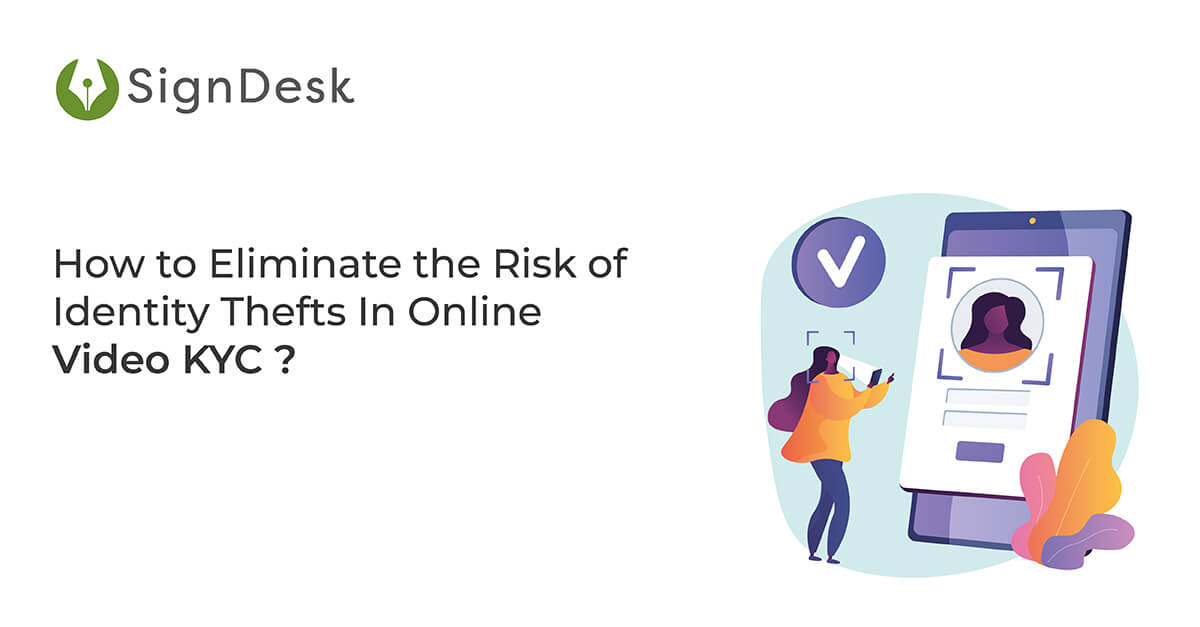The Role of Artificial Intelligence In Ascertaining a User’s Presence During Video KYC
KYC verification for user registration or client onboarding can be carried out with just a few clicks, thanks to Video KYC solutions. By introducing AI-driven remote identity verification with liveness checks, customers/clients can use their phones or PCs to easily carry out their KYC processes from a place convenient to them. However, there always lies a threat of spoofing in such digital procedures.
Facial spoofing has resulted in increased cybercrime rates, which can impact both businesses and customers. Implementing smart technologies that can precisely validate the liveness of a user during video KYC is vital for businesses.
Facial spoofing threats in online KYC Verification
Facial spoofing poses major threats not only to the organization but also to the individual’s identity. Cyber-criminals perform forgery attacks with a pre-recorded video, impacting the company’s finances and reputation. Therefore it is of utmost importance for financial, insurance, retail, and many other businesses to introduce a fool-proof system to prevent facial spoofing during their online customer/client verification procedure.
From masks, cut-out photos, to deep fakes, there are several ways in which fraudsters can meddle with the online video verification process. Fraudsters can also create or steal identity documents so as to open fraudulent accounts in finance and insurance firms. A smart fraud detection system can be an effective solution for this scenario. Using it, firms can successfully complete their customer/client onboarding process by eliminating masquerade attacks.
What is a Liveness Check?
One of the means by which the presence of the actual person is verified while conducting the online Know Your Customer (KYC) procedure is through vipv liveness checks. A liveness check is a process that uses various liveness detection algorithms to analyze the realness of a video or image. The process can validate whether an uploaded video or photo actually belongs to a live person or a fake. Implementing a liveness check during a video KYC procedure can ensure that the user attempting to register for a service/product is actually behind the attempt.
Liveness check makes use of an array of different technologies such as face mapping, image processing, and motion detection to confirm the identity of the user. They scan the user’s video for micromotions and depth in order to differentiate a real face from a hoax. These technologies are engineered to prevent fraudsters from carrying out illegal activities like facial spoofing during the video-based KYC process.
Different Types of Spoofing Attacks
- Video or Photo Attack: Fraudsters can gain access to an authorized user’s photo or video to spoof the video KYC. They can do so by either simply performing a Google search or by visiting the individual’s social media account. The fraudster can print the image and use it to develop a 2D mask for spoofing purposes.
- Model or 3D Mask: Fraudsters make use of customized models or three-dimensional face masks to mimic an individual’s physical likeness while performing an online KYC procedure.
- Deepfake: Fraudsters use either a video or a photo and edit it with animation software to convey that the person is physically present. They create realistic versions of the person by including actions like nodding the head and talking.
Various Approaches to Video KYC Liveness Checks
Liveness checks distinguish between a genuine live face of a user and an attempt to spoof the online KYC system with a fake representation of a face. Various approaches exist to detect the liveness of the user, mainly falling into either an active or passive category.
- Active liveness detection is a fraud detection method that requires the user to respond to a command in order to participate in the liveness check. Some of the active liveness checks deployed during video verification include:
– Smiling
– Blinking
– Nodding
– Gaze tracking
– Turning one’s head to the side
– Speaking out a series of numbers or words
- Passive liveness detection, on the other hand, requires no specific actions from the user. It is an AI-based approach to ensuring a face presented to a face recognition system is live. This approach gives no indication to the user that he/she is being tested, as one is not required to perform any additional motion tasks to complete the check. Some of the means by which passive liveness detection for face recognition is implemented in video KYC include:
– Use of hardware-assisted approaches such as depth measuring
– Shining varying lights on the user to create various exposures
– Capturing a short video to detect micro-movements
Conclusion
As more and more businesses are taking on the digital route, accurate and reliable liveness checks for financial crime detection become highly important for onboarding and authentication processes. Implementing a smart and customer-friendly liveliness check mechanism can play a key role in preventing crime while offering a convenient video verification experience to the user.
These simple tests can make it challenging for fraudsters to circumvent the underlying security technology and thus reduce the possibility of facial spoofing. An AI-driven approach to performing liveness checks is a smart and hassle-free procedure for users to complete their KYC while being scrutinized virtually. Smart identity verification solutions offered by video KYC providers like SignDesk can help organizations effortlessly onboard customers without facing any risk of fraud.
Book a free demo to see how AI-powered fraud detection and smart liveness checks, including digital student onboarding, mitigate risks of spoofing attacks and prevent ID fraud.
